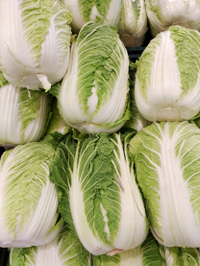
Patterns of genomic variation in Chinese maize inbred lines and implications for genetic improvement
Sign Up to like & getrecommendations! Published in 2018 at "Theoretical and Applied Genetics"
DOI: 10.1007/s00122-018-3072-z
Abstract: Key messageGenetic relationships among Chinese maize germplasms reveal historical trends in heterotic patterns from Chinese breeding programs and identify line Dan340 as a potential genome donor for elite inbred line Zheng58.AbstractThe characterization of the genetic… read more here.
Keywords: improvement; breeding programs; line; heterotic patterns ... See more keywords

Assessment of genetic gains from introgression of temperate genes into tropical elite maize inbred lines: I. performance per se
Sign Up to like & getrecommendations! Published in 2021 at "Euphytica"
DOI: 10.1007/s10681-021-02773-4
Abstract: There is very limited information on genetic gains and improvement of maize inbred line performance per se that has been attained through introgression of temperate germplasm into tropical maize germplasm to enhance adaptability in target… read more here.
Keywords: inbred lines; maize inbred; temperate; genetic gains ... See more keywords

Evaluating multiple resistance to major diseases in a core set of inbred lines of Brassica rapa at seedling stage
Sign Up to like & getrecommendations! Published in 2018 at "Journal of Plant Pathology"
DOI: 10.1007/s42161-018-0095-x
Abstract: Years of continuous cropping of Brassica rapa crops in main producing areas in China lead to the outbreak of some diseases, such as downy mildew (DM), turnip mosaic virus (TuMV), black rot (BR), verticillium wilt… read more here.
Keywords: brassica rapa; seedling stage; resistance; inbred lines ... See more keywords

Combining ability and nature of gene action in maize (Zea mays L) inbred lines for resistance to gray leaf spot disease (Cercospora zeae maydis) in Ethiopia
Sign Up to like & getrecommendations! Published in 2018 at "Crop Protection"
DOI: 10.1016/j.cropro.2018.05.010
Abstract: Abstract Ten elite maize inbred lines were selected based on all over per se performance and gray leaf spot disease reaction. Crosses were made in a 10 × 10 half-diallel mating design to produce 45 F 1… read more here.
Keywords: cml; disease; spot disease; leaf spot ... See more keywords

Low straw phosphorus concentration is beneficial for high phosphorus use efficiency for grain production in rice recombinant inbred lines
Sign Up to like & getrecommendations! Published in 2017 at "Field Crops Research"
DOI: 10.1016/j.fcr.2016.12.017
Abstract: The objective of this study was to comprehensively investigate the relationship of phosphorus (P) concentration and accumulation with yield formation and P use efficiency for grain production (PUEg) using 127 rice recombinant inbred lines grown… read more here.
Keywords: inbred lines; concentration; grain; phosphorus concentration ... See more keywords

Leaf transcriptomic response mediated by cold stress in two maize inbred lines with contrasting tolerance levels.
Sign Up to like & getrecommendations! Published in 2021 at "Genomics"
DOI: 10.1016/j.ygeno.2021.01.018
Abstract: Maize (Zea mays L.) is a thermophilic plant and a minor drop in temperature can prolong the maturity period. Plants respond to cold stress through structural and functional modification in cell membranes as well as… read more here.
Keywords: maize inbred; tolerance; two maize; stress ... See more keywords

Selection footprints reflect genomic changes associated with breeding efforts in 56 cucumber inbred lines
Sign Up to like & getrecommendations! Published in 2019 at "Horticulture Research"
DOI: 10.1038/s41438-019-0209-4
Abstract: Cucumber selective breeding over recent decades has dramatically increased productivity and quality, but the genomic characterizations and changes associated with this breeding history remain unclear. Here, we analyzed the genome resequencing data of 56 artificially… read more here.
Keywords: cucumber; cucumber inbred; selection; changes associated ... See more keywords

Revealing new insights into different phosphorus-starving responses between two maize (Zea mays) inbred lines by transcriptomic and proteomic studies
Sign Up to like & getrecommendations! Published in 2017 at "Scientific Reports"
DOI: 10.1038/srep44294
Abstract: Phosphorus (P) is an essential plant nutrient, and deficiency of P is one of the most important factors restricting maize yield. Therefore, it is necessary to develop a more efficient program of P fertilization and… read more here.
Keywords: phosphorus; transcriptomic proteomic; revealing new; new insights ... See more keywords

Identification of DNA methylated regions by using methylated DNA immunoprecipitation sequencing in Brassica rapa
Sign Up to like & getrecommendations! Published in 2018 at "Crop and Pasture Science"
DOI: 10.1071/cp17394
Abstract: Abstract. DNA methylation is an epigenetic gene regulatory mechanism that plays an essential role in gene expression, transposon silencing, genome imprinting and plant development. We investigated the influence of DNA methylation on gene expression in… read more here.
Keywords: methylation; brassica rapa; methylated dna; inbred lines ... See more keywords

The genomics of linkage drag in inbred lines of sunflower
Sign Up to like & getrecommendations! Published in 2023 at "Proceedings of the National Academy of Sciences of the United States of America"
DOI: 10.1073/pnas.2205783119
Abstract: Significance Wild relatives of crops often contain traits such as pest resistance that can be tapped to improve cultivated varieties. This is typically accomplished by crossing wild plants with cultivars, followed by backcrossing (introgression) to… read more here.
Keywords: inbred lines; introgression; linkage drag; genomics linkage ... See more keywords

The parental inbred lines of the Nested Association Mapping (NAM) population of corn show sources of resistance to tar spot in northern Indiana.
Sign Up to like & getrecommendations! Published in 2022 at "Plant disease"
DOI: 10.1094/pdis-02-22-0314-sc
Abstract: Tar spot is a major foliar disease of corn caused by the obligate fungal pathogen Phyllachora maydis, first identified in Indiana in 2015. Under conducive weather conditions, P. maydis causes significant yield losses in the… read more here.
Keywords: spot; inbred lines; corn; tar spot ... See more keywords